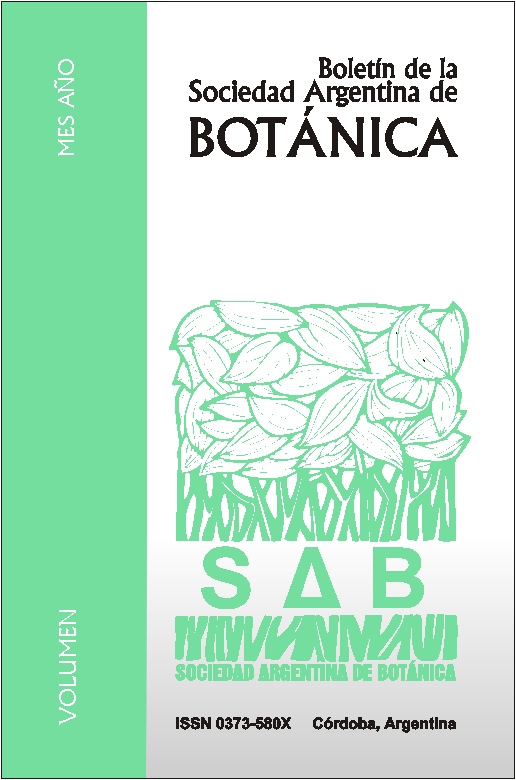Spore morphology and wall ultrastructure in Equisetaceae spores (Equisetopsida) from north-western Argentina.
DOI:
https://doi.org/10.31055/1851.2372.v49.n1.7819Keywords:
Equisetaceae, Equisetum, Argentina, spores, morphology, ultrastructure.Abstract
Spore morphology and wall ultrastructure in Equisetaceae spores (Equisetopsida) from north-western Argentina. The family Equisetaceae is represented in the study area by the genus Equisetum with two species, E. bogotense and E. giganteum. The study was based on herbarium and fresh specimens and the spores were studied under light microscope, scanning and transmission electron microscopes. The spores are spheroid, 35-64 µm in equatorial diameter, the cytoplasm has chlorophyll. In both species studied, the spores have a circular and small unique type of aperture which at both sides of the aperture, in the outer side have two thread-like elaters, spathulate. These structures are non-resistant to the acetolysis treatment. The sporoderm is composed of two walls, perispore, 930 nm-1,2 µm thick, ornamented, with two layers in section. The exospore is two layered, compact, 1,4-3,1 µm thick, slightly wave-like. Between both walls was observed an intermediate layer composed of a laxe structure, in spores in different stages of maturation. In both species, the spores are similar in the shape and sporoderm ultrastructure while differences were found in spore sizes.Downloads
Issue
Section
License
Provides immediate and free OPEN ACCESS to its content under the principle of making research freely available to the public, which fosters a greater exchange of global knowledge, allowing authors to maintain their copyright without restrictions.
Material published in Bol. Soc. Argent. Bot. is distributed under a Creative Commons Attribution-NonCommercial-ShareAlike 4.0 International license.





